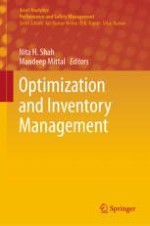2020 | OriginalPaper | Buchkapitel
17. Allocation of Order Amongst Available Suppliers Using Multi-objective Genetic Algorithm
verfasst von : Azharuddin Shaikh, Poonam Mishra, Isha Talati
Erschienen in: Optimization and Inventory Management
Verlag: Springer Singapore
Aktivieren Sie unsere intelligente Suche, um passende Fachinhalte oder Patente zu finden.
Wählen Sie Textabschnitte aus um mit Künstlicher Intelligenz passenden Patente zu finden. powered by
Markieren Sie Textabschnitte, um KI-gestützt weitere passende Inhalte zu finden. powered by
